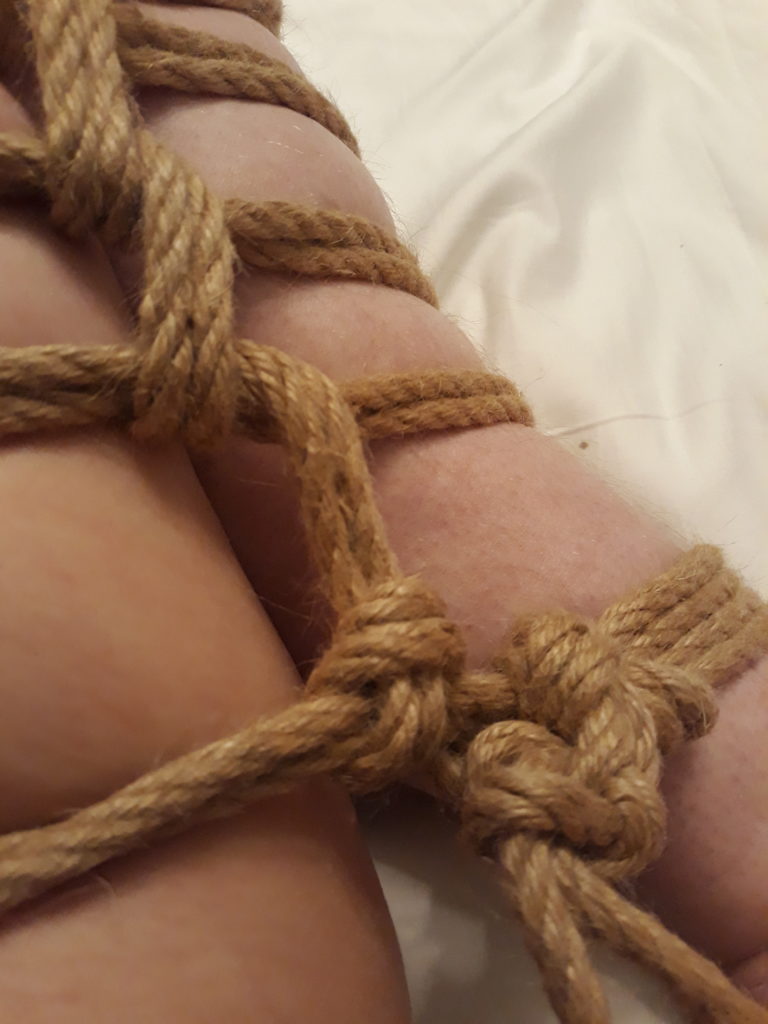Some kinksters have always known they were kinky, sometimes from even before they had a word for it. Others come to kink and BDSM later on, after intensely questioning and examining their desires and fantasies. Have you ever agonised over the question “am I kinky?”, wondered if you’re kinky enough to claim the label and call yourself a part of the community, or felt stuck on how to explore your interest in kinky things?
If so, this post is for you.
What is Kinky?
This is where I always like to start when it comes to examining the question of whether a person is kinky: what even is kinky, anyway?
Wikipedia defines kinkiness as “the use of sexual practices, concepts or fantasies that are not conventional.” This general theme continues in other definitions I looked at. Justin Hancock, of sex education platform Bish UK, writes that “‘Kink’ is a set of pleasurable activities that people choose to do together that in other contexts are not pleasurable or usual.” The Cambridge Dictionary definies it as “a strange habit, usually of a sexual nature.”
But these definitions require us to ask ourselves: what is “conventional?” What is “usual?” In order to define what it means to step outside of these “norms”, we have to understand what the norms are in the first place.
Sexual norms, like other societal norms, are inherently subjective and informed by an array of factors from the social and political to the religious. Some people would say that the only “normal” sex to have is married, penis-in-vagina intercourse in the missionary position. Some would say that activities such as oral sex, anal sex, and mutual masturbation are completely “normal” and therefore not kinky. For others, however, having anal sex or masturbating in front of their partner might feel extremely kinky.
Pain is often associated with BDSM, but this isn’t always the case. My friend Violet Grey wrote a great guest blog about how kink isn’t all whips and chains. You don’t need to play with pain at all to be kinky, if you don’t want to. For some people, kink is entirely or mostly psychological. For others, it involves playing with intense or challenging sensations that are not necessarily painful (rope bondage, tickling kinks, and temperature play being just some obvious examples.)
Power play is another facet that often appears in kink, but doesn’t have to. Dominant and submissive dynamics – the D/s in BDSM – are one way to play with kink, but they are not essential to it. For example, some people enjoy sadomasochism (the consensual giving and receiving of pain) without any element of power imbalance.
Then there’s fetishism, which involves a sexual response to an item, body part, or activity that is not traditionally viewed as sexual. Foot fetishes, material fetishes (such as latex or rubber), and watersports (playing with pee) are just some examples of common fetishes. But do you need to have a fetish to be kinky? Nope!
I realise this might not be very helpful. I realise I’m offering lots of things that being kinky might mean, but no hard and fast litmus test. But that’s also part of the beauty of kink. You get to define what it means to you and for you.
Do you fantasise about, or take part in, sexual or sensual acts that feel in some way unconventional or “outside the norm” to you? If so, you might be kinky!
Am I Kinky Enough to Call Myself Kinky?
If you take nothing else from this piece, I hope you’ll remember this: there’s no such thing as “kinky enough”.
Much like queerness, ultimately the only test is “do you identify as kinky?” If so, then congratulations! You’re kinky! It’s also fine to take part in the community even if you’re not yet sure if you’re kinky, by the way. We’ll talk about this a bit more later on.
You don’t need to be into the most extreme things imaginable to call yourself kinky. Everyone has unique preferences, desires, limits, and boundaries. You also don’t need to be constantly trying out the next new hardcore thing! If the only kinky thing you ever want to do is get tickled with feathers, or have your wrists cuffed to the headboard during sex, or spank your lover? You’re kinky enough!
I can’t promise you won’t encounter any gatekeeping in the kink community. Sadly you might. After all, kink scenes are made up of people and people are sometimes dickheads. However, the vast majority of the people you meet will likely be completely lovely and non-judgemental. If anyone judges you for not being extreme enough or says that your kink isn’t really a kink, feel enormously free to ignore them. Or tell them to fuck off. That’s fun too.
6 Ways to Better Understand Your Kinks
If you think you could be kinky, you might already know exactly what you’re into. You might also have only a vague sense… or absolutely no idea yet! Whatever is true for you, it’s all fine. In this section, I’ll give you a few ideas for ways you can explore your kinky identity further and develop a deeper understanding of your kinks.
Take a BDSM Test
A BDSM test is an online quiz that asks you a series of questions to help you determine your kink identity, role, interests, or archetype. It can be a great place to start your explorations.
Remember that a BDSM test is supposed to be a guide, not Gospel. If your result doesn’t feel quite right for you, then that’s also useful information you can take forward. It can also be useful to revisit your BDSM test of choice every year or two. Chances are your preferences will evolve and your results might change, too. Mine certainly have!
Do a Yes/No/Maybe List
Yes/No/Maybe lists are checklists of all kinds of kinky activities. The idea is that you go through the list and indicate whether you’re a “yes”, a “no”, or a “maybe” to doing each thing. Some lists also have a column where you can indicate your level of interest and/or level of experience with each activity. They’re a great place to start exploring what types of kinky play might interest you. They can also help you to identify the things you absolutely don’t want to do, which is equally useful.
Yes/No/Maybe lists can be particularly useful tools in negotiating kinky play or relationships. If you and your partner or prospective partner complete the same list, you can then compare your results to find out where your interests overlap.
You can find numerous free Yes/No/Maybe lists online. I like this one by Bex Talks Sex!
Consume Erotic Content
Erotic content such as ethical porn, written erotica, and audio erotica can be great ways to explore your interest in kink, whether you consume it alone or with a partner. If you consume a wide array of content you might even discover new things that interest you!
Remember: porn and erotica are entertainment, not instruction. They can help you to understand your kinks, but they are not a blueprint for how to do it in real life. Finding something hot in fiction also doesn’t mean you need to do it in real life. If you have a fantasy that you’d prefer stayed a fantasy, that is completely valid.
Get Involved in Your Local Kink Community
Wherever you are in your personal kink journey, there are so many great reasons to seek out your local community.
Firstly, you’ll make friends. Kinky friends can be utterly invaluable, particularly when you’re new and exploring. It’s considered poor etiquette to treat kink spaces as your personal cruising grounds, but if you’re looking for a partner or play partner then making authentic connections and building a solid reputation in the kinky community is a great place to start.
Being active in your local community is the best way to find out about events, get vetted, and get invited to awesome play parties!
You’ll also learn a lot. If there’s one thing I’ve learned about kinksters in my 16 years “on the scene” it’s that we’re fucking nerds. Want to enthuse about your favourite kinky thing? Desperate to show off your gorgeous new custom flogger or eager to learn how to tie someone up safely? The kink community is where you can make the kinds of friends who will relish these interactions.
Start by heading out to your local munch or finding a class on a kinky activity that interests you.
Talk About Your Fantasies
If you have a partner or partners, talking about your fantasies can help you both/all to learn more about your kinks. Talking about fantasies can be a safe way to ease into trying them out. It can also be a hot precursor to sex.
Want to talk about your kinks but don’t have a partner to do it with? Try joining some discussion groups for your interests on Fetlife or paying a professional phone sex/cyber sex provider to engage in some dirty talk with you.
Try Things Out
Sometimes there’s no substitute for just trying something to see if you like it. If you think you might be into a particular kink, why not grab a consenting partner and give it a go? (You can also explore many elements of BDSM alone, by the way, but that’s a subject for another post!)
Do your research beforehand so you know how to stay safe. Establish a safeword or safe signal. Discuss desires, hard and soft limits, and boundaries. Go as slowly as you need to. Most importantly, check in regularly and communicate with your partner or partners at every stage. Grab a beginners’ bondage kit to start trying things out without spending a fortune.
And remember: kink and BDSM is a journey. You don’t need to have all the answers now or ever. Evolving, growing, changing, and reevaluating is part of the deal and part of the fun. Let the adventure take you where it will!
This post was kindly sponsored by Fetish.com and their BDSM test! All views and writing are, as always, mine.


















